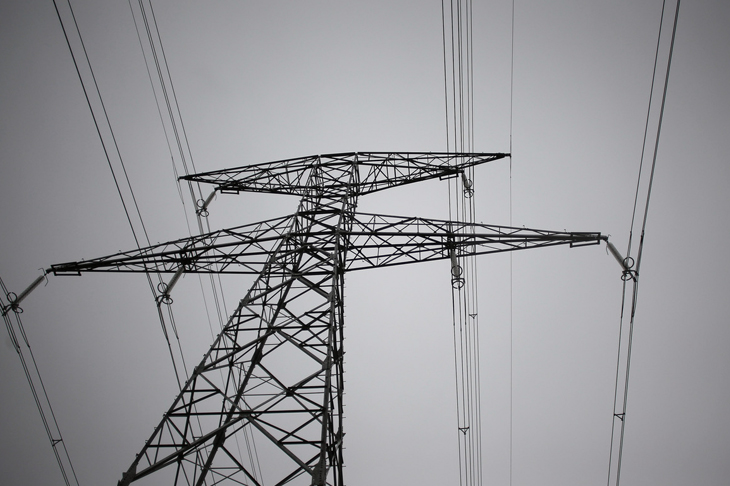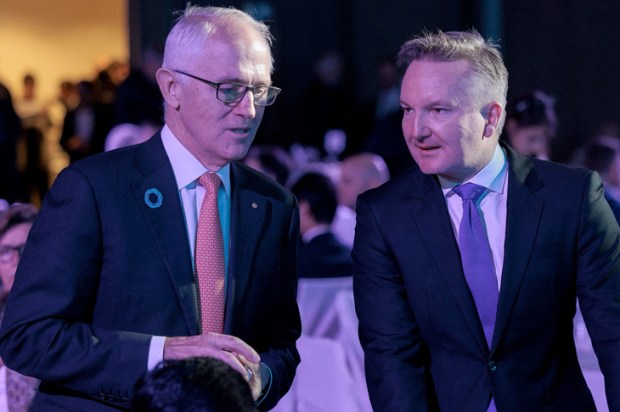It may just be dawning on B1, our intrepid climate change and energy minister Chris Bowen, that his dream of having the electricity grid powered by 82 per cent renewable energy by 2030 is looking a little shaky.
He made a rookie error by actually telling us what the target meant in terms of additional wind turbines and solar panels. The answer is an additional 40 9-megawatt turbines and 22,000 500-watt solar panels each month to 2030. As some of us can still count – clearly an overrated ability these days – the cumulative run rate is not looking good.
And did I mention the additional 10,000 kilometres of transmission lines required by 2030 to connect the renewable energy to the grid? We will be doing very well if we can achieve 500 to 600 kilometres per year.
B1’s chief frustration is with the slow roll-out of these gigantic pylons and the connecting cables. He can always ramp up the subsidies for the spivs – or I should say ESG investors? – in the renewable energy sector. As long as the installations can be on-sold, investors will take the subsidies upfront to build more wind and solar developments.
Mind you, some of the RE operators are taking a bath at the moment because their output is being curtailed because of the congestion on the grid. Even that deep-green agency, the Australian Energy Market Operator, has conceded that there was a 40 per cent increase in curtailment from RE last year in the east-coast National Electricity Market.
Getting the new transmission lines built is proving to be a serious headache – closer to a migraine, actually – for B1. According to him, ‘When it comes to transmission, social licence is the most important issue we have to face. A near-total rebuild of the grid comes with challenges, particularly for the communities where projects will be built.’
In his attempt to appear reasonable, he added that ‘It would be easy, but wrong, to dismiss those concerns as just NIMBY-ism. In my experience, most concerned community members are not anti-renewables, anti-transmission, or anti-progress. Nor, in most cases, are they opposed to the projects going ahead if their concerns are addressed.’
Let’s unpick this. What B1 really means by ‘social licence’ – which is a crock of a term, by the way – is that the government will attempt to bribe you, but if it has to it will force through the transmission lines. There will be faux consultation processes, some changes will be made (that were always on the cards), and voila, investments can go ahead backed by social licence.
Why shouldn’t the farmers and regional communities be happy to have their landscapes defaced and the use of their land limited when there’s a greater good – pretending to save the planet?
But is it really surprising that those affected by these intrusive developments would object so strenuously? Is it really possible for their concerns to be addressed, to use B1’s terminology?
The initial bribes offered for the right of access to properties were around $100,000 per kilometre of transmission line, paid as an annuity over 20 years. This has now been bumped up to $200,000 and there is a rumour that a figure of $300,000 is now being offered. Of course, someone must pay, most probably electricity consumers in the form of higher prices rather than taxpayers. (The largest component of electricity prices is already transmission costs.)
The thing is that even with sweeteners of this magnitude, some landholders will still refuse to play ball. In certain cases, this is completely rational because the decrement in the value of the land would be greater than the amortised compensation. Of course, some landholders will refuse simply on principle, particularly where the land has been held by one family for generations.
This is where the compulsion comes in. Victoria passed a law some time ago that would provide for the compulsory acquisition of easements deemed necessary to build approved new transmission lines. Even for the totalitarian Andrews government – and possibly even for B1 – this endpoint is not really desirable. But the decarbonisation journey must be completed, so we should expect some showdowns.
Recently, a subsidiary of AEMO, which has been commissioned by the Victorian government to construct new transmission lines, has been threatening farmers with a fine of $10,000 for refusing to allow staff access to their properties. It turned out that the company had no legal right to impose such fines and was required to back off. Oops.
In the back of B1’s mind would be the thought that the people who are objecting to these transmission lines are unlikely to be Labor voters. Does obtaining social licence really matter at the end of the day?
It turns out that the matter is not so simple. Around Bendigo, for instance, a whole lot of lefty types are opposed to the new VNI West interconnector, including some well-known actors who live in the area. Another oops.
Being the brainiac he is, B1 now thinks that part of the solution is to locate the turbines offshore, particularly if they can be placed in coastal areas close to existing transmission lines. Sure, they may be much more expensive, but what the heck? It turns out that the locals living on the coast are not actually keen on massive wind turbines the height of Sydney Harbour Bridge that can be clearly seen from the shore.
There has been a major kerfuffle along the NSW Central Coast where the residents of Norah Head, in particular, have really got their knickers in a knot. The consultation process was hopelessly flawed, with locals given only a few days to make a submission. There was a rent-a-letter campaign orchestrated by trade unions representing workers in the Hunter Valley – a long way from the coast. Needless to say, these letters were highly supportive of the offshore wind turbines.
Having thought he had this one in the bag, B1 has now been forced to significantly scale back the project, having told quite a few porkies about the number of jobs that would be created and the assertion that the wind blows at different times at sea relative to land. His department has also failed to keep up-to-date with the risk these turbines pose to migratory whales, something that has become a big issue in the US.
Let’s face it, getting a social licence is just another way of ramming government policy down the throats of affected citizens, whether they like it or not. Pretend to listen and hope the opposition dies down. Sometimes it does, but not always.
Got something to add? Join the discussion and comment below.
Get 10 issues for just $10
Subscribe to The Spectator Australia today for the next 10 magazine issues, plus full online access, for just $10.
You might disagree with half of it, but you’ll enjoy reading all of it. Try your first month for free, then just $2 a week for the remainder of your first year.













Comments
Don't miss out
Join the conversation with other Spectator Australia readers. Subscribe to leave a comment.
SUBSCRIBEAlready a subscriber? Log in